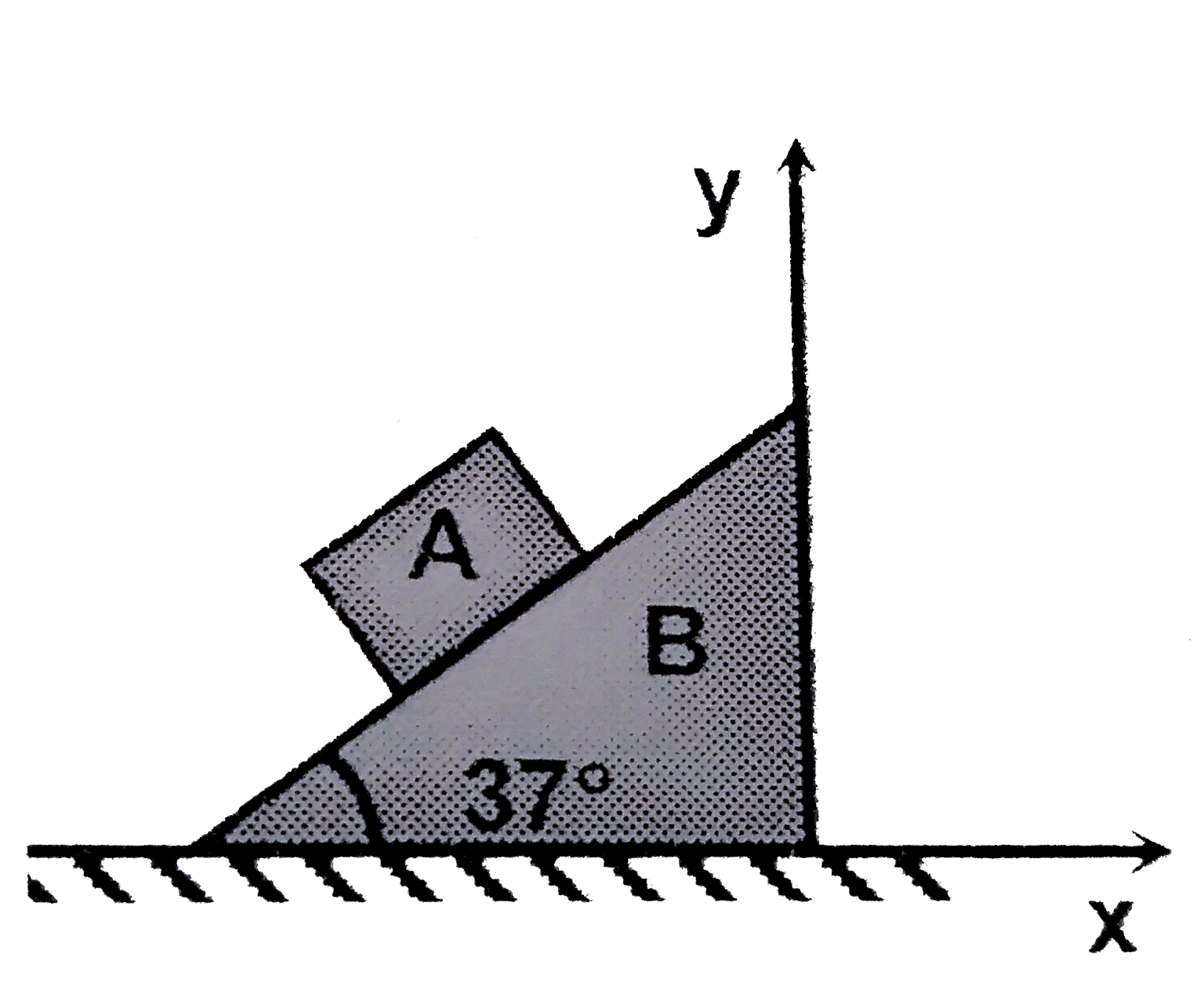In the figure shown the accelerationof is . Then the acceleration of is (A remain in contact with B)

The correct Answer is:D
Let acceleration of B
Then acceleration of A w.r.t.
This acceleration must be along the inclined pplane
so
Topper's Solved these Questions
- KINEMATICSBook:ALLENChapter:KINEMATICSExercise:EXERCISE-03
Explore 6 Videos
- KINEMATICSBook:ALLENChapter:KINEMATICSExercise:Assertion-Reason
Explore 20 Videos
- KINEMATICSBook:ALLENChapter:KINEMATICSExercise:EXERCISE-01
Explore 55 Videos
- ERROR AND MEASUREMENTBook:ALLENChapter:ERROR AND MEASUREMENTExercise:Part-2(Exercise-2)(B)
Explore 22 Videos
- KINEMATICS (MOTION ALONG A STRAIGHT LINE AND MOTION IN A PLANE)Book:ALLENChapter:KINEMATICS (MOTION ALONG A STRAIGHT LINE AND MOTION IN A PLANE)Exercise:BEGINNER S BOX-7
Explore 8 Videos
Similar Questions
In fig, the acceleration of A is →aA=15ˆi+15ˆj. Then the acceleration of B is (A remains in constact with B)

View SolutionIn the figure shown the acceleration of A is, ¯aA=(15ˆi+15ˆj)m/s2. If A is sliding on B then the acceleration of B is.

View SolutionIn the situation as shown in the figure if acceleration of B is a, then find the acceleration of A (B always remain horizintal),

View SolutionIn the arrangement shown in figure, if the acceleration of B is ¯a , then find the acceleration of A

View SolutionIn the figure shown find relation between magnitudes of aA and aB.

View SolutionIn the figure shown find relation between magnitudes of aA and aB.

View SolutionIn the figure shown neglecting friction and mass of pulley, what is the acceleration of mass B ?

View SolutionIn the figure shown the velocity of A with respect to ground is (20ˆi+15ˆj)m/s, then what will be the magnitude of velocity of the wedge 'B' with respect to ground frame. (A remains in contact with B)

View SolutionA particle starts from origin at t=0 with a velocity of 15ˆims−1 and moves in xy-plane under the action of a force which produces a constant acceleration of 15ˆi+20ˆjms−2. Find the y-coordinate of the particle at the instant its x-coordinate is 180 m.
View SolutionThe projection of ¯¯¯A=2ˆi+2ˆj+5ˆk on to ¯¯¯B=ˆi−ˆj is:
View Solution